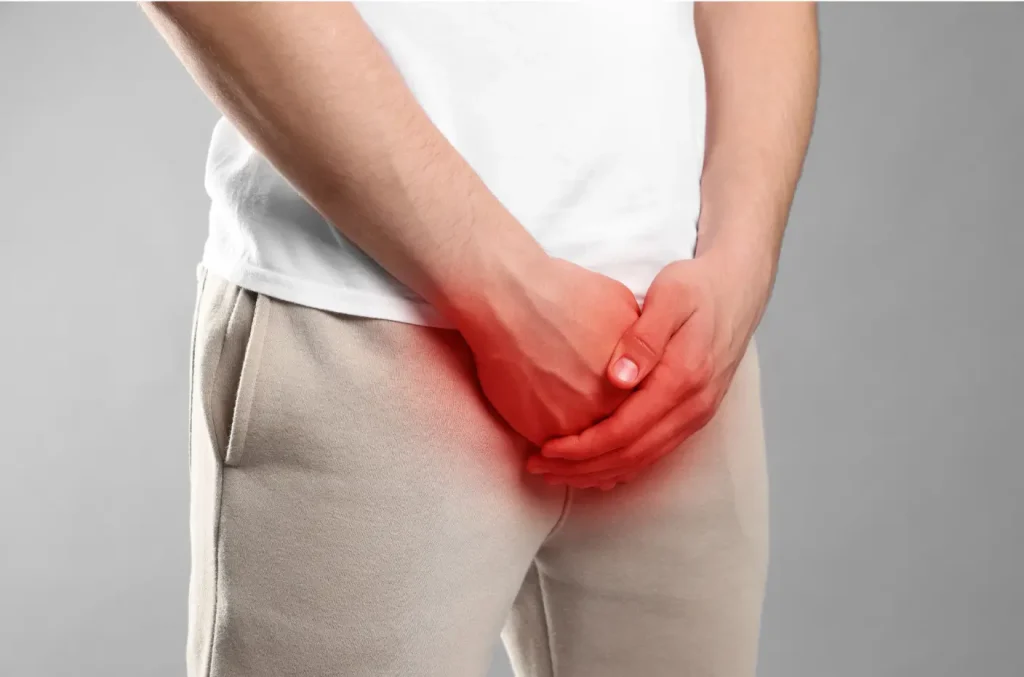The human quest for a slimmer body isn’t anything new. Throughout history, we humans have tried various methods of losing weight, with some being outright dangerous (tapeworm cure) and others being relatively normal (low-carb diet), with varying levels of success. Today’s topic is simply a new chapter in our weight-loss journey. We will discuss how people use the medication Ozempic for weight loss and its common side effect known as “Ozempic face,” which is actually a natural part of the drastic weight loss process.
First, What Is Ozempic?
Ozempic is the brand name for the medication semaglutide, an incretin mimetic drug used to treat type 2 diabetes. Instead of replacing insulin, it helps the body regulate the release of insulin when blood glucose levels are high. That is just one effect. The other one, which is more of interest to us today, is that it mimics the hormone glucagon-like peptide-1 (GLP-1). GLP-1 creates a sense of fullness, diminishes one’s appetite, and slows down the emptying of the bowels. Not only does it provide a feeling of fullness, but it’s also known to eliminate cravings for certain food types, including alcohol.
This combination can lead to rapid weight loss, which may sound like a good thing, but it can actually have a negative effect on one’s hair, skin, and overall look. It’s not uncommon for your face to change after weight loss, especially if we are talking about a rapid and substantial body weight loss (above 10-15% per month), which can easily happen with Ozempic and similar medicines.
Proper medication dosing can help control weight loss, but since no two people are the same, different doses may have different effects. Nonetheless, any weight changes should be followed by a proper diet and exercise plan, but in most cases, they aren’t, which also leads to additional problems and bouncing back to the original weight quickly after the patient stops taking the medicine.
It’s important to note that Ozempic is FDA-approved for treating type 2 diabetes, but people started using it off-label for weight loss once they could no longer get ahold of Wegovy.
What Is Ozempic Face?
While many consider it an unwelcome part of their face, fat plays an important role in maintaining a youthful appearance and facial contour. It provides a soft and smooth texture to the skin, helping to fill out areas and prevent the formation of wrinkles and fine lines. Additionally, facial fat acts as a natural cushion, providing support and protection to underlying structures like muscles and bones. Fat distribution in the face also contributes to facial symmetry and defines our unique facial features.
The side effect of Ozempic, the so-called Ozempic face, is a naturally occurring process of losing fat and muscle on the face, resulting in saggy skin, wrinkles, and a hollow appearance. It’s important to understand that this phenomenon occurs naturally and is not caused by any specific substance in Ozempic. Targeting specific fat cells in the body is simply impossible, as fat loss occurs throughout the body in a generalized manner. These can and will happen if you use another weight-reducing drug, experience rapid weight change, or because of aging itself.
How Do You Treat the Facial Effects of Ozempic
These negative facial effects aren’t anything new to medical practitioners, and they’ve been dealing with them for a while now, mostly to combat the signs of aging, but the same treatments can be applied to deal with facial weight loss caused by taking Ozempic. There are two ways of addressing it: dermal fillers and fat grafting.
Dermal fillers are a non-invasive procedure for correcting facial volume loss and minimizing the appearance of wrinkles and sagging skin. These fillers, typically composed of hyaluronic acid, are injected into specific areas of the face to restore lost volume and improve facial contours. The procedure is relatively quick and requires little to no downtime, making it and products like Radiesse a popular choice for addressing weight loss and face change after Ozempic therapy.
Fat grafting, on the other hand, is an invasive procedure that involves harvesting fat from another area of the body and injecting it into the face to restore volume and enhance facial features. This procedure is more invasive than dermal fillers but offers longer-lasting results as the transplanted fat integrates with the existing facial tissues.
Ultimately, the choice between dermal fillers and fat grafting depends on various factors, including individual needs and preferences and the extent of facial volume loss. It’s not uncommon for both procedures to be used to achieve the patient’s desired goal.
Other Side Effects of Ozempic
Like any other medicine on the market, Ozempic has a list of side effects ranging from mild to severe, some being serious but luckily rare. These are:
- nausea
- fatigue
- flatulence
- vomiting
- stomach ache
- constipation
- diarrhea
- abdominal pain
- injection-site bruising
- severe allergic reactions
- vision problems
- hypoglycemia
- gallbladder disease
- kidney problems
- pancreatitis
- an increased risk of thyroid cancer
If you decide at any point to stop taking the medicine, it takes around five weeks for the drug to be filtered out of your system.
Conclusion
Ozempic is an FDA-approved medication primarily used for treating type 2 diabetes but is also used to induce weight loss. It’s important to clarify that weight reduction medications like Ozempic are intended for use by individuals who are obese and not for those who are already at a healthy weight and simply want to appear thinner.
Face feature changes after weight loss aren’t anything unusual, although with rapid weight changes, rapid face changes happen as well. Therefore, it’s important to remember to approach weight loss in a gradual and sustainable manner, minimizing the impact it has on facial appearance. By applying a slow and steady approach, implementing lifestyle changes, diet changes, and a physical activity routine, ensuring proper hydration and taking steps for skincare, you can prevent or minimize the likelihood of negative effects on appearance rebounding as soon as you stop using Ozempic. Consistency and patience are key to achieving long-lasting results while maintaining a youthful facial appearance throughout your entire weight loss journey.
FAQ
Does Ozempic change your face?
Ozempic may change your face if you experience rapid weight loss every month.
How do you prevent saggy skin with Ozempic?
Prevent saggy skin with Ozempic by taking things slowly and gradually changing your lifestyle habits to your diet and physical activity.
What is the best treatment for Ozempic face?
Depending on the amount of saggy skin and the volume lost, it will be dermal fillers for most people, and fat grafting for people with severe cases.
Reference:
- Once-Weekly Semaglutide in Adults with Overweight or Obesity; John P.H. Wilding (DM), Rachel L. Batterham (MB, BS, PhD), Salvatore Calanna (PhD), Melanie Davies (MD), Luc F. Van Gaal (MD, PhD), Ildiko Lingvay (MD, MPH, MSCS), Barbara M. McGowan (MD, PhD), Julio Rosenstock (MD), Marie T.D. Tran, (MD, PhD), Thomas A. Wadden (PhD), Sean Wharton (MD, PharmD), Koutaro Yokote (MD, PhD), Niels Zeuthen (MSc), and Robert F. Kushner (MD); Mar 2021
- Once-Weekly Semaglutide in Adolescents with Obesity; Daniel Weghuber (MD), Timothy Barrett (PhD), Margarita Barrientos-Pérez (MD), Inge Gies (PhD), Dan Hesse (PhD), Ole K. Jeppesen, (MSc), Aaron S. Kelly (PhD), Lucy D. Mastrandrea (MD), Rasmus Sørrig (PhD), and Silva Arslanian (MD); Dec 2022
- Effect of abdominal resistance exercise on abdominal subcutaneous fat of obese women: a randomized controlled trial using ultrasound imaging assessments; Ramin Kordi, Saeed Dehghani, Pardis Noormohammadpour, Mohsen Rostami , Mohammad Ali Mansournia; Mar 2015
- Efficacy and safety of once-weekly semaglutide 2·0 mg versus 1·0 mg in patients with type 2 diabetes (SUSTAIN FORTE): a double-blind, randomised, phase 3B trial; Juan P Frías, Pernille Auerbach, Harpreet S Bajaj, Yasushi Fukushima, Ildiko Lingvay, Stanislava Macura, Anette L. Søndergaard, Tsvetalina I. Tankova, Nikolaos Tentolouris, and John B Buse; Jul 2021
- [Facial fat: descriptive and functional anatomy, from a review of literature and dissections of 10 split-faces]; T Dumont, E Simon, M Stricker, J-L Kahn, and J-F Chassagne; Feb 2007
- Anatomy and aging of cheek fat compartments; Salvatore Fundarò, Giovanni Mauro, Alberto Di Blasio, Chiara Di Blasio, and Pierre Schembri-Wismayer; Oct 2018
- Autologous Fat Grafting for Facial Rejuvenation; Advait Vasavada and Blake S. Raggio; Feb 2023





















